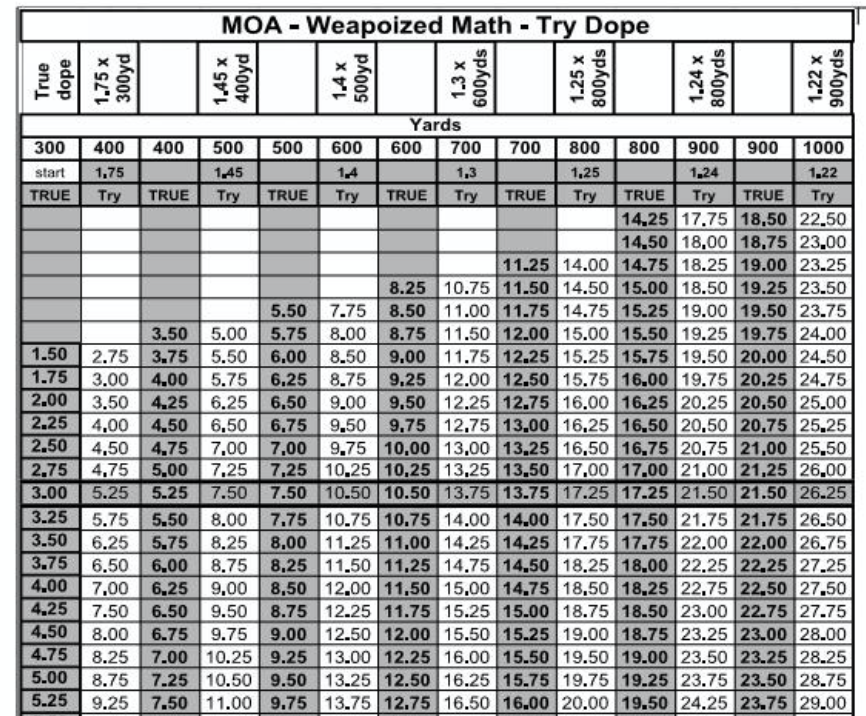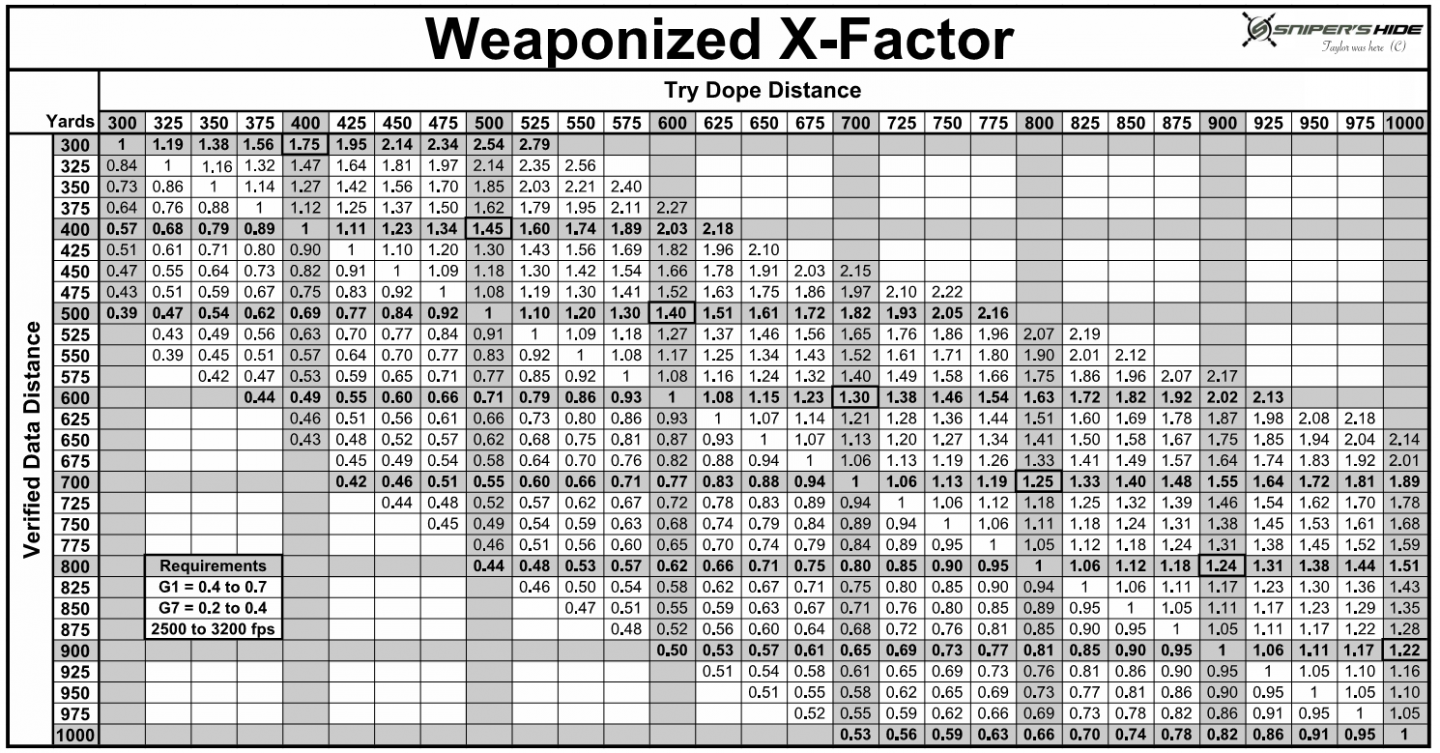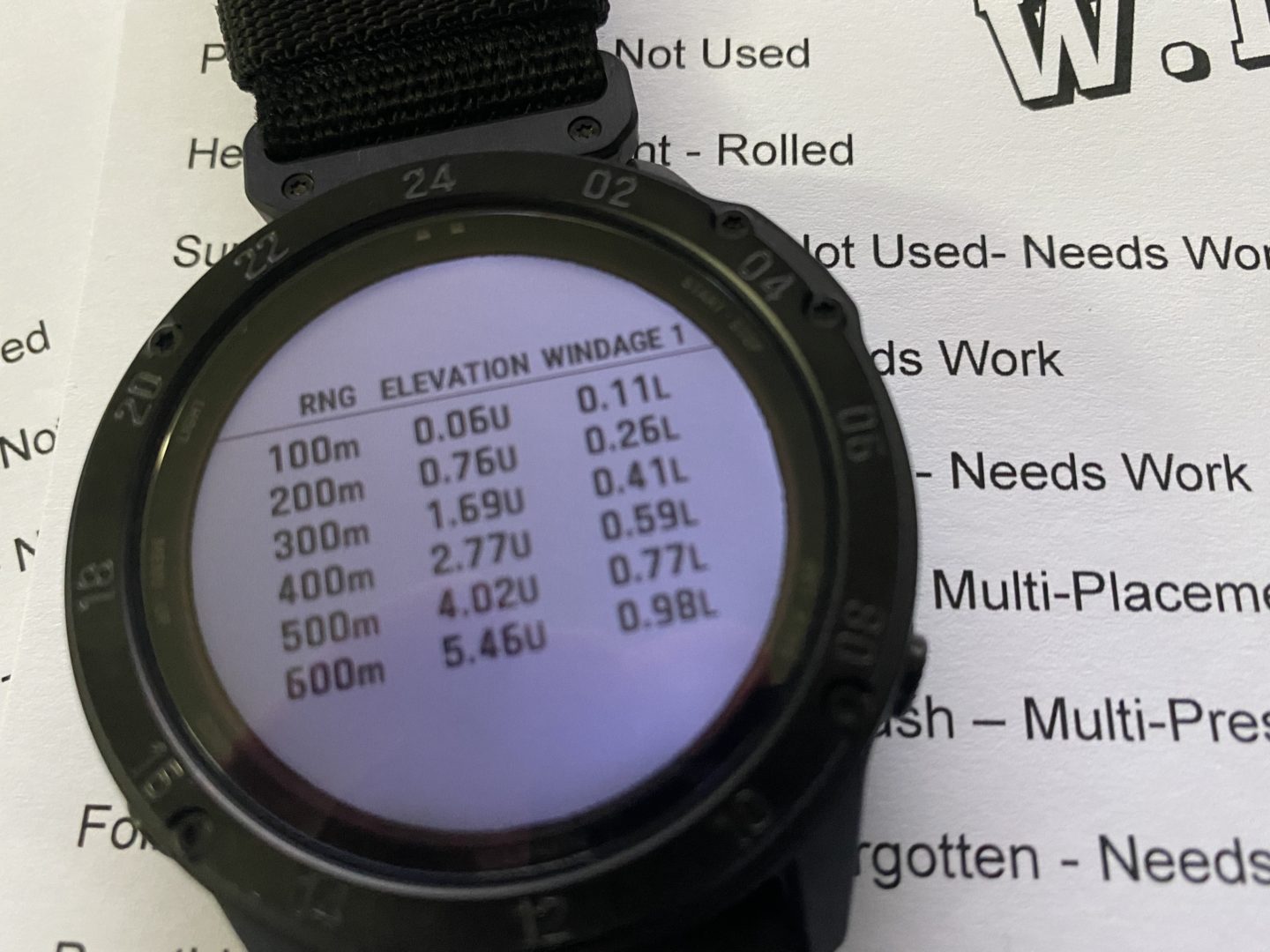You’ve got your new precision rifle and you’ve downloaded the latest – greatest ballistic solver. You are coffee’d up, it’s a beautiful day and you are off to the range to gather data. But really. Really. Do you understand what you are doing? Most do not.
Many shooters attempt to create hit data (Data On Prior Engagement) utilizing a ballistic chart of pre-printed data points based on the basic ballistic solver parameter inputs; bullet diameter, bullet weight, muzzle velocity, ballistic coefficient, yada yada yada. I get it. It can be done, but it is neither predictable nor repeatable because you are working on the problem from the wrong end. Don’t start with solutions. Start with problems.
Problem Number One: Zero the Shooter
You must be fundamentally sound. You must be able to create one five-shot group and not five one-shot groups. Therefore you must be consistent from press to press and shot to shot. That is learned. You must seek training from training professionals or you will be chasing what you think is a mechanical zero that will shift every time your recreate your position, because your position is not consistent each time you create it. Why? Because YOU, the shooter, are not zeroed. Only when the shooter is zeroed can the rifle truly be zeroed. You’ve all experienced this; “Oh, wow. My zero has shifted since the last time I shot. I’d better loosen my caps and get this tightened up.” It’s really YOU who need tightening up. We, as shooters, are the weak link in the “weapon system”.
Problem Number Two: Zero the Rifle
Always, and I mean ALWAYS zero at 100 yards. That means 300 feet. 3600 inches. If you are a follower of my articles, you know that “Errors are Cumulative”, so at least let’s attempt to make this right by bringing our point of aim to coincide with our point of impact at a true 100 yards. That is a great starting place and all ranges shot from now on, whether the range is shorter-than or longer-than 100 yards, will require you to dial UP on your elevation turret. Yes, even a 10-yard shot. A 10-yard shot will require you to dial on your 700 to 800 yard data. Try it. And you’d be surprised at how many brick and mortar ranges who take your money for a day of shooting do not even have a proper 100 yards in place.
Problem Number Three: Gravity

What’s inside this mechanical zero? Drop. Gravity is a constant and works on pulling the bullet toward the center of the earth from the time it leaves your barrel. You are truly sighting the bore above the center of the target to hit the center even at 100 yards. There is DROP built into your Zero. Understand that.
When we dial our scopes UP on the elevation turret, we are actually driving the reticle DOWN within our sight picture. This requires us to raise the barrel slightly in order to create a Line of Departure that accounts for gravity’s pull on the bullet from the time it leaves your bore. The farther out we shoot, the greater that angle will be to overcome that drop. The bullet never travels above that imaginary line through the bore called Line of Departure. It falls below that imaginary line as soon as it leaves the barrel.
Problem Number Four: Gathering Data Out to Farther Ranges
To keep things orderly, we usually gather data at even 100-yard ranges. So we will be starting at 200 yards. Yes, as close to exactly 200 yards as you can get. Most of our field mid-range precision rifles will require a come up of 4, 5 or 6 tenths of a mil of elevation at 200 yards. Your group will give you the correct answer. Do not assume or compromise, or you will be adding error that will compound itself as we move down range.
At 300 yards I want you to simply DOUBLE your 200 yard data. That is a great starting point and may be exactly your data at 300 yards. Once you have data at 300 yards to an exact, center of plate aiming point, WRITE IT DOWN and Weaponized Math takes over.
Problem Number Five: Weaponized Math

Not a problem at all, really. It’s an easy-to-use data page where you progress down range by using the next multiplier for the last yard line’s center-of-plate data. Simply MULTIPLY your 300 yard data by 1.75 and you will be on or near the center of the plate at 400 yards. FINE TUNE it and move on to the next yard line and the next multiplier.
300 Yard Data X 1.75 = 400 Yard Data
400 Yard Data X 1.45 = 500 Yard Data
500 Yard Data X 1.40 = 600 Yard Data
600 Yard Data X 1.30 = 700 Yard Data
700 Yard Data X 1.25 = 800 Yard Data
800 Yard Data X 1.24 = 900 Yard Data
900 Yard Data X 1.22 = 1000 Yard Data
We have posted Worksheets for Weaponized Math and there are published Flow Charts that will accomplish the same. Thanks, @JackMaster. The important part is to WRITE IT DOWN when you have what you believe to be correct data at each yard line.
This is where it gets interesting, so pay attention…
Problem Number Six: Going Inside the Numbers
*CHECKING YOUR WORK*
Let’s revisit “Problem Number Three: Gravity”
Gravity is a constant, but more importantly, gravity is a consistency. As your bullet slows down as it passes over the range, its ability to fight gravity diminishes, so it is dropping more and more the farther we go down range. AND IT MUST FLOW ON PAPER.
RANGE DATA DROP from previous
200 .4 .4
300 .9 .5
400 1.6 .7
500 2.4 .8
600 3.3 .9
700 4.2 .9
800 5.2 1.0
900 6.3 1.1
1000 7.5 1.2
Do you see what is happening here? Above, the DROP flows in a curve over the course of the 1000 yards. The DROP numbers must progress smoothly and orderly. It flattens slightly between 600 and 700 because that is mid-range and the max ordinate of the trajectory. NOW, what is wrong below?
RANGE DATA DROP
200 .4 .4
300 .9 .5
400 1.6 .7
500 2.4 .8
600 3.3 .9
700 4.1 .8*
800 5.2 1.0
900 6.3 1.1
It is not possible for the drop to be LESS between 600 and 700 (.8 mils) than it was between 500 and 600 (.9 mils) because gravity will act progressively on the bullet as it slows!
This is called CORRUPT DATA, and it will cause problems down range and frustration across the course if it is not corrected. In this case, you needed less data at the longer range, therefore your rifle barrel became more elevated. This exposes a problem at the rear of the rifle normally and that means that the rifle sank in the rear bag during this position at this range. CORRECT IT, because it is not true.
The LAST PROBLEM: Getting My Known DATA Lined Up With My Ballistic Application

Take your KNOWN DATA to the Ballistic App, NOT the Ballistic App data to your rifle. A great way we line up data quickly is to tweak muzzle velocity in the Ap to produce what you see (D.O.P.E.) at 600, until it lines up. Then tweak, if necessary, your ballistic coefficient slightly until your 800 yard data on your ballistic App matches your D.O.P.E. at 800. Once this happens, everything else falls closely into place.
Remember, ammunition is a factor. It is not perfect and is only precise to .2 mils on a great day, so there will always be a tweak here and there to refine your data on paper. Also, we as shooters cannot hold to within .1 mil aiming point at longer ranges each and every shot so that may cause an inconsistency here and there, but your written DROP numbers will expose that problem. Always go back and check the math.
In the past, you have taken your ballistic solver to the range with the range card or “table” open and wondered why what you are shooting does not line up with what you are reading. The ACTUAL D.O.P.E. is all that matters. But if you want to utilize the ballistic solver, you must make the ballistic solver line up what what you are shooting, not make your shooting line up with what you are reading in the ballistic solver.
Problems demand solutions, and the solution is…
GOING INSIDE THE NUMBERS
Marc Taylor
Instructor – Snipers Hide Precision Rifle Course
Previous Articles on SnipersHide.com:

